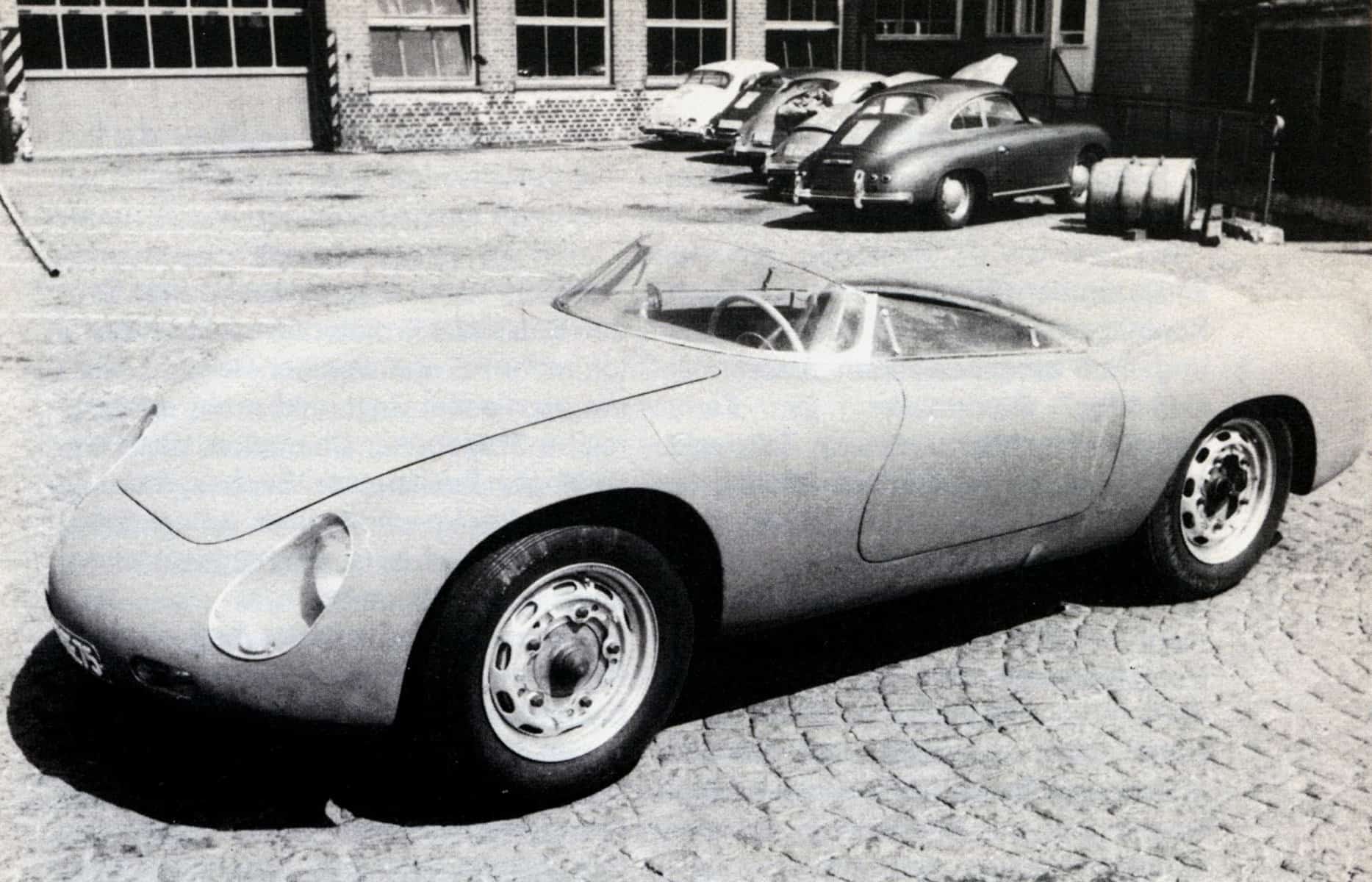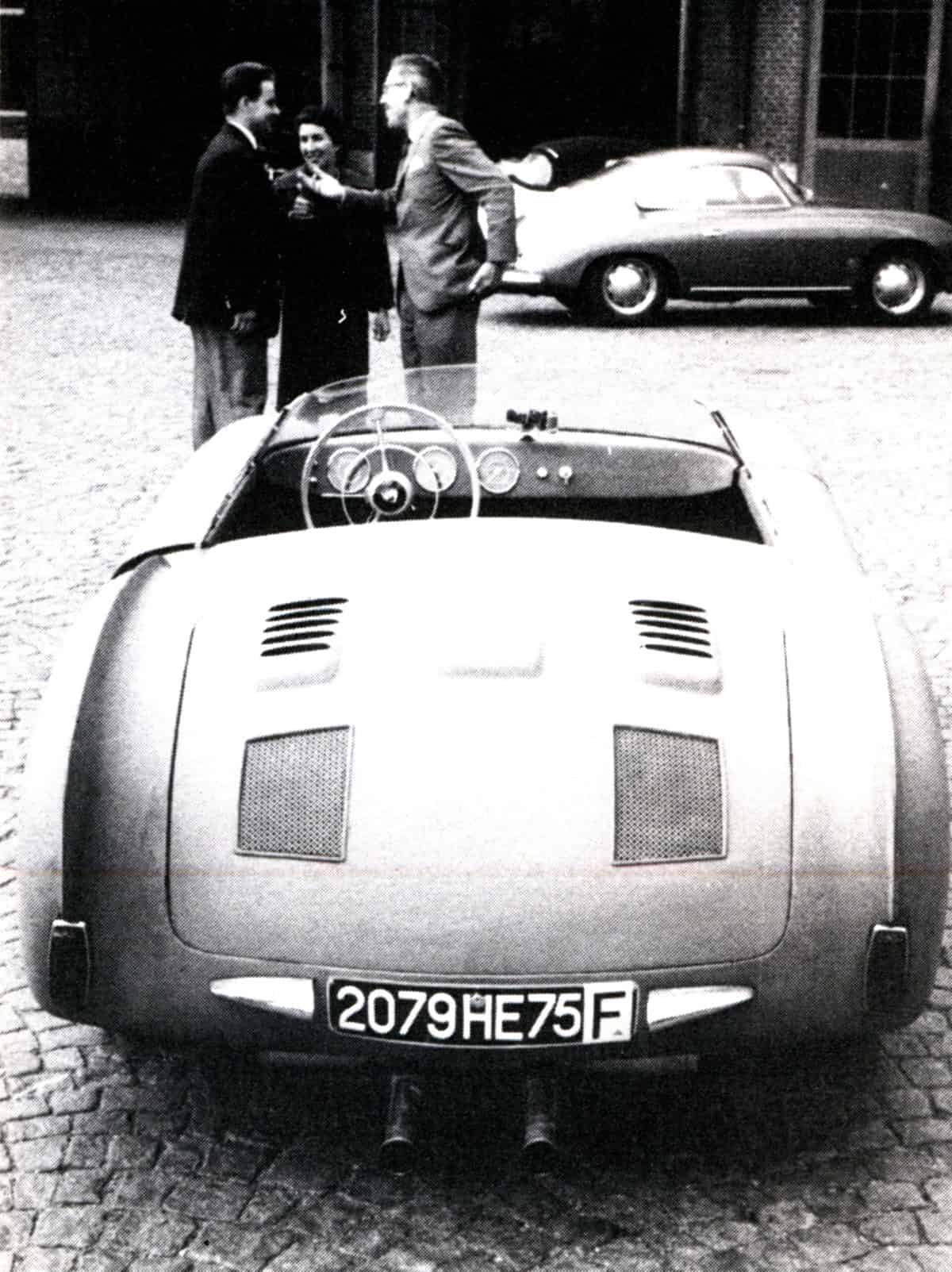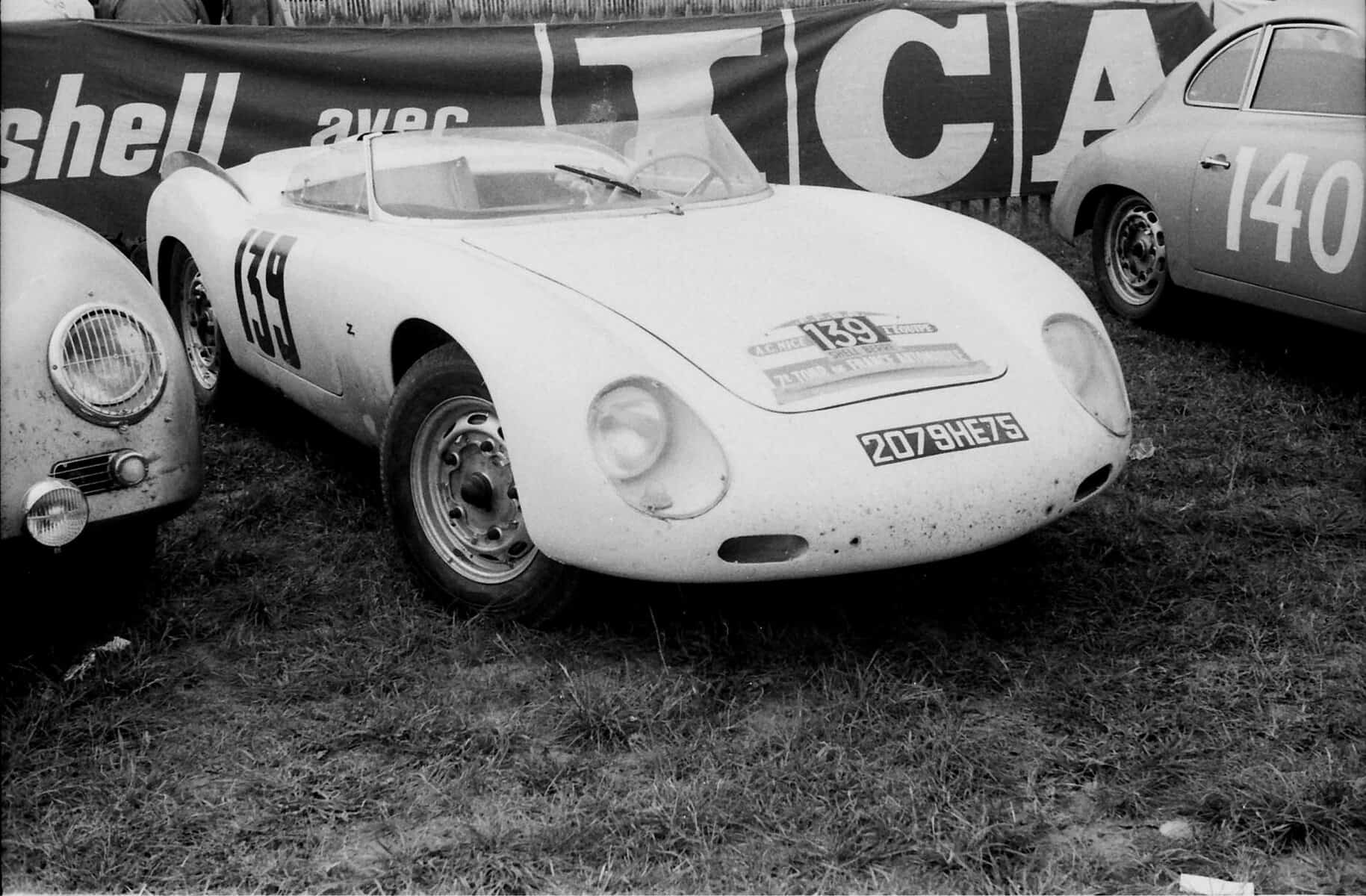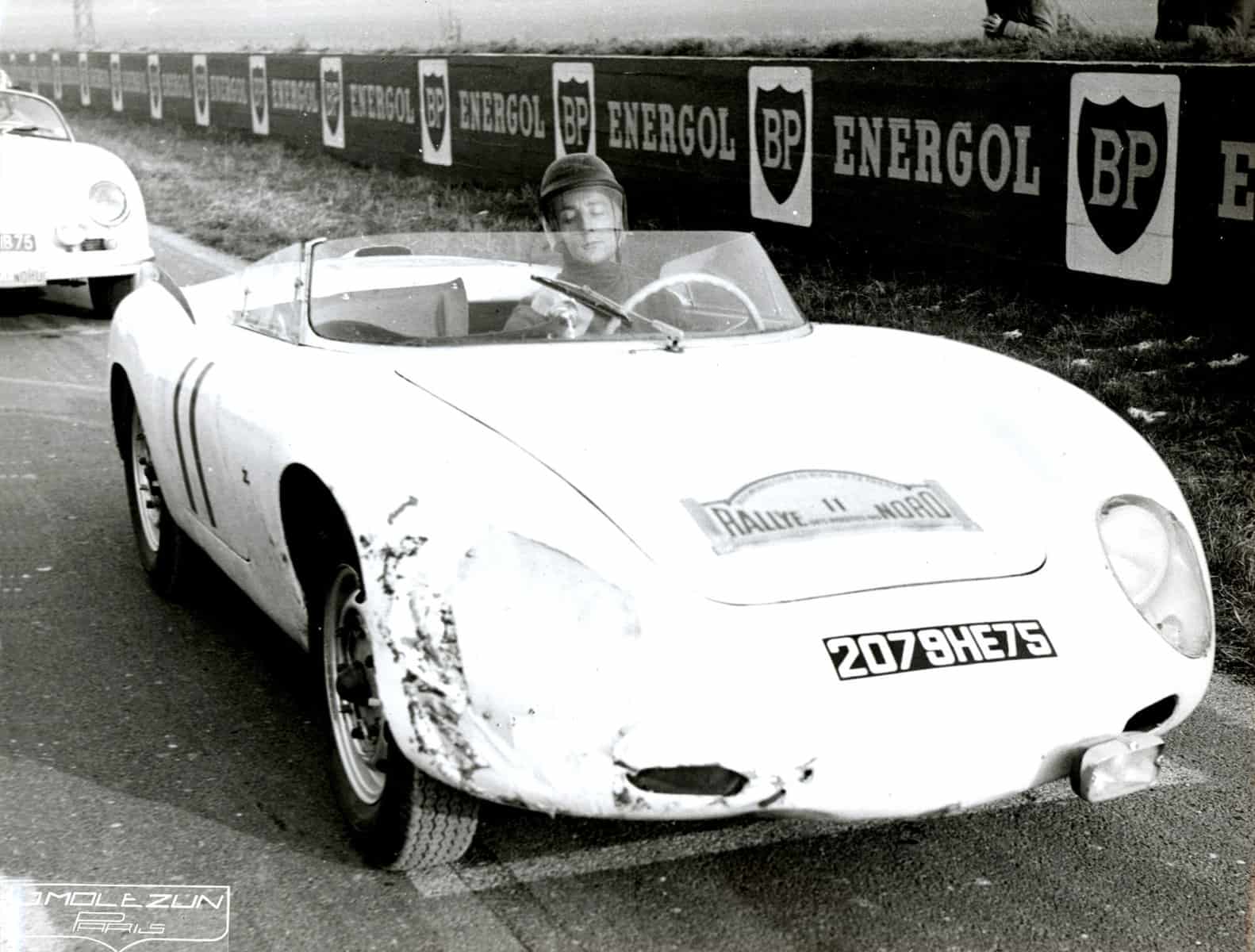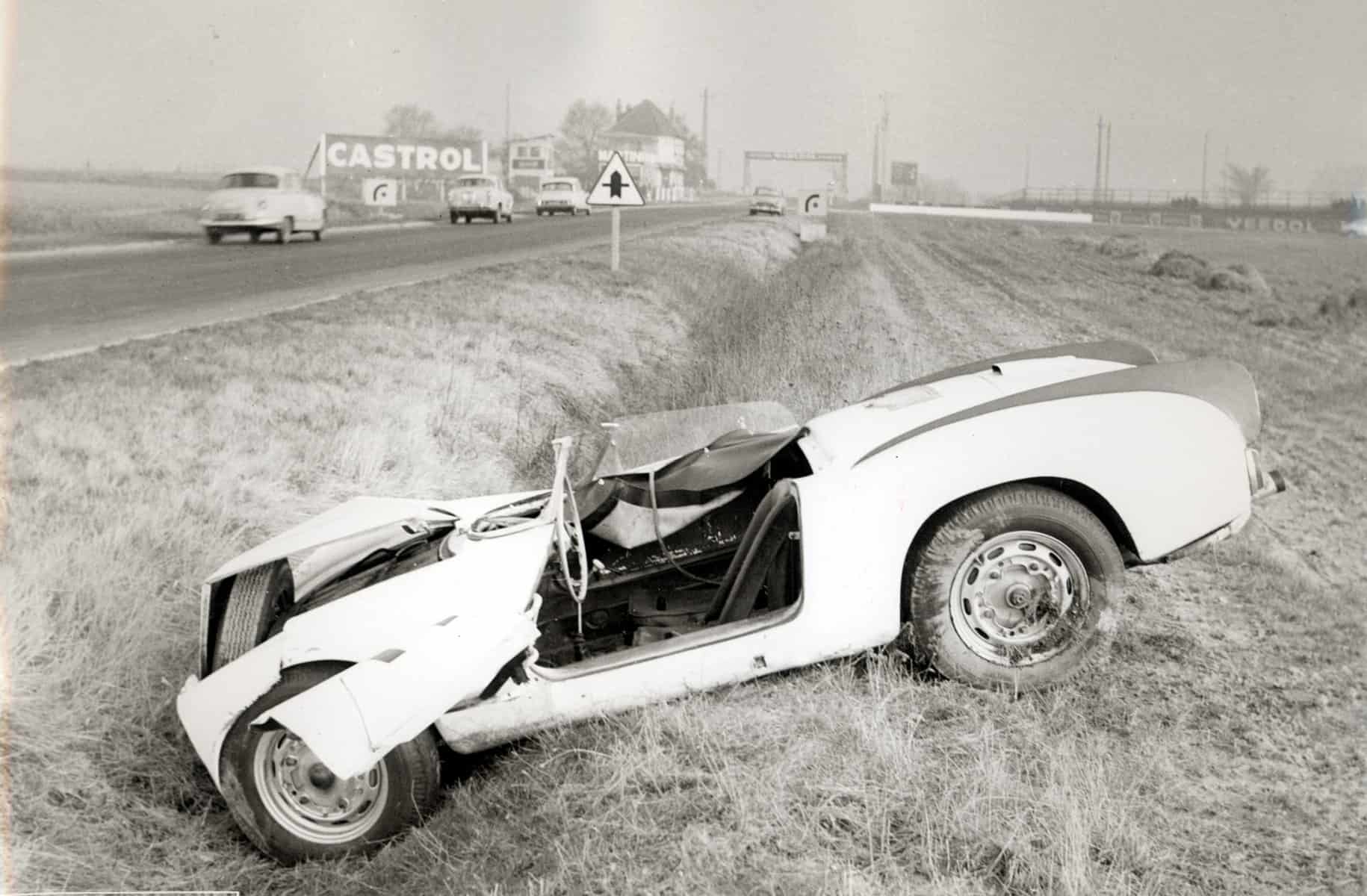The Zagato Carrera of Claude Storez
Final ride for a legendary French racer
BY: KARL LUDVIGSEN
PHOTOS: LUDVIGSEN PARTNERS
A fine French driver turned to Zagato to create a lightweight racer from a brand-new Porsche 356 Carrera Speedster. The result proved its merit in the 1958 Tour de France Auto, only to crash at Reims in 1959 with fatal consequences.
Born in Paris in 1927, Claude Storez became one of the most successful French racing drivers of his time. Financial support for his sporting pastime came from his role as a partner in the large printing company operated in France’s capital city by his father Leon, who shared his son’s enthusiasm for motor sports. In Claude’s first season at the age of twenty-three, Leon partnered him in the Liège-Rome-Liège Rally, driving a Citroën prepared by René Bonnet. That same year, 1950, Claude raced a Simca at Montlhéry. Father and son drove a Simca in 1951’s Tour de France Auto.
Claude Storez began competing seriously in 1952 with a Simca Sport and a Porsche 356, his first contact with the marque he favored in future. In September he raced his Porsche in the Tour de France Auto and the Coupe d’Automne. His talent spotted by René Bonnet, Storez became a works driver for the DB-Panhard racers of Deutsch-Bonnet in 1953. Partnered by Marc Gignoux he competed at Spa and in the Tour de France Auto in the blue 750-cc DBs.
In 1954 DB-Panhards again figured in the Storez season. This was the debut year for the Monomill Championship, a one-make series contested by identical Panhard-powered front-drive single-seaters. Storez enjoyed successes in this series. He began 1955 well with a win in the first race at Dakar. Monomill, however, was prematurely abandoned after the 1955 Le Mans disaster.
In September 1954’s Tour de France Auto Claude Storez appeared with Porsche’s Herbert Linge in a 550 Spyder. This was an early Spyder 550-08, equipped for the occasion with a tuned 1500 Super engine to cope with the Tour’s 4,000-mile duration. The 1954 Mille Miglia winner in the hands of Hans Hermann, this historic car was bought by Storez after he and Linge placed second overall in the Tour and won their class. Powered by a four-cam engine, in an October race at Montlhéry he placed second in class.
This Spyder, already a veteran with 11,577 miles on the clock when he bought it, was the mount of Claude Storez well into 1956. In 1955 he used it whenever he was not racing for DB, to whom he brought a 750-cc class win in the Mille Miglia, placing thirty-fifth overall. His Porsche was his ride at Tunis, Agadir, Spa, and Dieppe. In the last of these, organized at the end of the Dieppe Rally, Storez won both his heat and the final.
The 1956 season began with a circuit race at Tours at the end of the Touraine Rally. In 550-08 Storez was second behind a Gordini and ahead of a Ferrari Mondial. He was third in class in the Prix de Paris at Montlhéry and eighth in May’s Spa Grand Prix. That was his last finish in 550-08, from which he stepped up in June to production Spyder 550-0027. Recognition of his talent by Porsche found Storez sharing a works Spyder with Richard von Frankenberg in the Reims 12-hour race for 1.5-liter cars. They were the outright winners.
Rallying by Storez in 1956 was in partnership with Robert Buchet, who was running a Porsche 356 Carrera. Before retiring in the 1956 Tour de France Auto they paced the smaller cars in a Carrera that Motor Sport described as “a 1954 Porsche stripped of all unnecessary weight, fitted with aluminum panels and a very healthy Carrera engine.” This was one of the astutely modified French Carreras that startled the works entries with their pace.
Fine form at this level in races and rallies found Claude Storez a French Champion in 1956. He repeated in 1957 and in 1958 was French Champion in Formula 2 racing. Buchet and Storez teamed up again in 1957 for the Tour de France Auto, in which their Carrera Speedster took them to sixth place overall behind four 250 GT Ferraris and a Mercedes 300SL driven by Stirling Moss. This was a dramatic demonstration of the four-cam Speedster’s potential.
With GT racing increasing in prominence, Claude Storez decided to equip himself well for 1958. Buying a 356 Carrera Speedster, he drove it to Milan. There he huddled with Carrozzeria la Zagato s.r.l., the coachbuilder whose record in clothing great sports-racing cars reached back to the Alfa Romeos of the 1930s. Founded in 1919 by Ugo Zagato, in the 1950s the company was run by Ugo with the support of his sons Elio and Gianni. An important customer was Carlo Abarth for his Fiat-based sports-racing cars.
The idea was for Zagato to rebody the Speedster to get it down to the homologated weight and make it as aerodynamically slippery as possible. This was meat and drink to the Italians, whose work was observed with interest by Porsche. Zagato limned a shape for the Speedster platform that combined their aerodynamic expertise with the Italian flair for attractive lines.
An all-new body could be significantly narrower than the 356 Speedster, with its voluminous flanks, to reduce frontal area and its associated drag. Notable features of the aluminum skin were generous front-wheelhouse openings, faired and shielded headlamps, rear-hinged “suicide” doors for easier entry, bespoke venting to feed the carburetors, and subtle rear finning for stability. Too low when delivered, the wraparound windscreen was raised and given a wiper for the driver.
When the rebodied Carrera was ready in the late summer of 1958 it was delivered to Zuffenhausen in primer. There its mechanicals received final tweaking, after which it was painted white with red fins recalling the color flashes that marked the tails of the early Spyders. By any standard it was a great-looking roadster with potentially decisive advantages over its conventional sisters.
While Zagato’s work was given its finishing touches, Porsche paired Claude Storez with Richard von Frankenberg for Le Mans in a works 718 RSK. Their race ended when another car crashed into them during a wet night. Soon afterward a factory Carrera was delivered to Reims for the twelve-hour race for GT cars on July 5. Entered by French Porsche distributor Auguste Veuillet, its pilots were von Frankenberg and—a popular choice for the French organizers—Storez. They delivered in spades. They won the 2.0-liter GT category and placed sixth overall behind five 250 GT Ferraris and ahead of two of them.
With his Zagato-bodied Carrera finally ready, Storez sent his cousin Michael Maniani to collect it and drive it to Paris. This misfired badly when Maniani was involved in an accident only six miles out of Zuffenhausen. Although the driver was little injured the car was so severely damaged that it had to be returned to Zagato for rectification.
Finally the radical white and red Carrera was ready for Storez and Buchet and September’s Tour de France Auto. Although failing to finish the demanding event, it left its mark. In the race at Reims, a track that favored high-speed capability, Claude Storez beat all the competitors save the Ferrari 250 GT of eventual winner Olivier Gendebien. The combination of Zagato and Porsche looked a winner.
It was cloudy and chilly on February 7, 1959, when Claude Storez brought his unique Carrera to an event that he often supported, the Rallye des Routes du Nord. It was a shorter version of the Tour with stops for competition on notable racing circuits in the north of France. One of the tracks was again Reims.
En route to the Reims race the Zagato suffered damage to its right front bodywork. Although visibly hammered out in time for the start, it might have hidden a fatal flaw. One report suggested that Storez fitted larger-diameter tires before the race, perhaps to give higher gearing on the track’s fast straights. Under braking this could have caused contact with unfinished elements of the hasty repair, provoking a sharp swerve.
Storez and the Zagato Carrera were doing well in the race, thrusting among much more powerful machinery on the fast Reims road course. On the downhill stretch toward the right-hand corner at Thillois, Storez braked at some 120 miles per hour. The white roadster lurched sharply right and charged off the tarmac into a deep ditch, rolling several times and hurling its driver out. Claude Storez, one of France’s finest drivers in his prime at thirty-two, died shortly after his helicopter ride to hospital.
Badly mauled, the Zagato-bodied Carrera was not called back to life. Not, that is, until 2012, when American racer Herb Wetanson contracted with Zagato to produce a replica. Wetanson was a Porsche pusher of old, having raced successfully in a Carrera 6 that he converted to a roadster. Completed in September of 2012, the replica is a worthy testimonial to the initiative of Storez and the skill of Zagato in spite of being silver instead of white and glossy to a fault.


